How do you visualize the greatness of Adrián Beltré, Todd Helton and Joe Mauer?
You can't possibly reduce the trio of 2024 Hall of Famers to their numbers, as great as those numbers are. But for Beltré, Helton and Mauer, who all played a significant part of their career in this golden age of baseball data -- as will every Cooperstown class that follows them -- we can at least use some of that data to capture a snapshot of what makes them Hall of Famers.
Here's one cool visual for each 2024 Hall of Famer that symbolizes why he belongs in Cooperstown.
1) Adrían Beltré: Late-career dominance
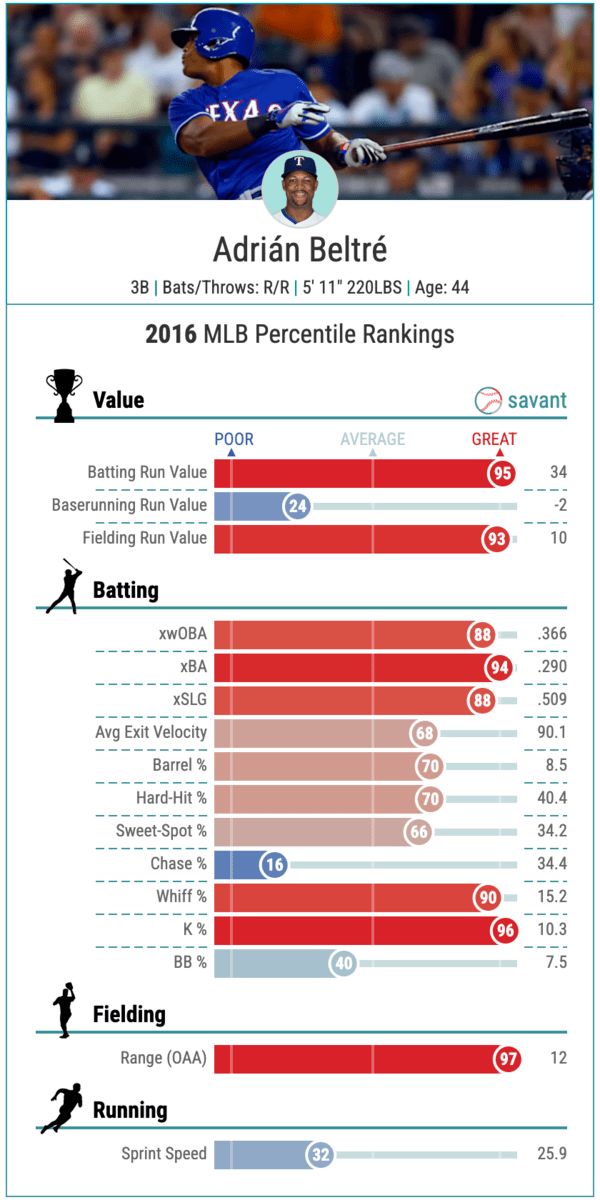
These are Beltré's MLB percentile rankings in various Statcast metrics for the 2016 season. Why 2016? Well, Beltré was 37 years old that season -- but he was still an MVP contender for the Rangers (he finished seventh in the American League voting).
And that's really the story of Beltré's Hall of Fame career. That career began in 1998 with the Dodgers at age 19, but you didn't know Beltré was a Hall of Famer until his remarkable run for Texas, a run that didn't begin until 2011, when he was already in his 30s.
Over his eight seasons with the Rangers, Beltré collected the last 1,277 of his career hits and the last 199 of his home runs. He became a perennial MVP contender, placing in the top 10 of voting four times in Texas.
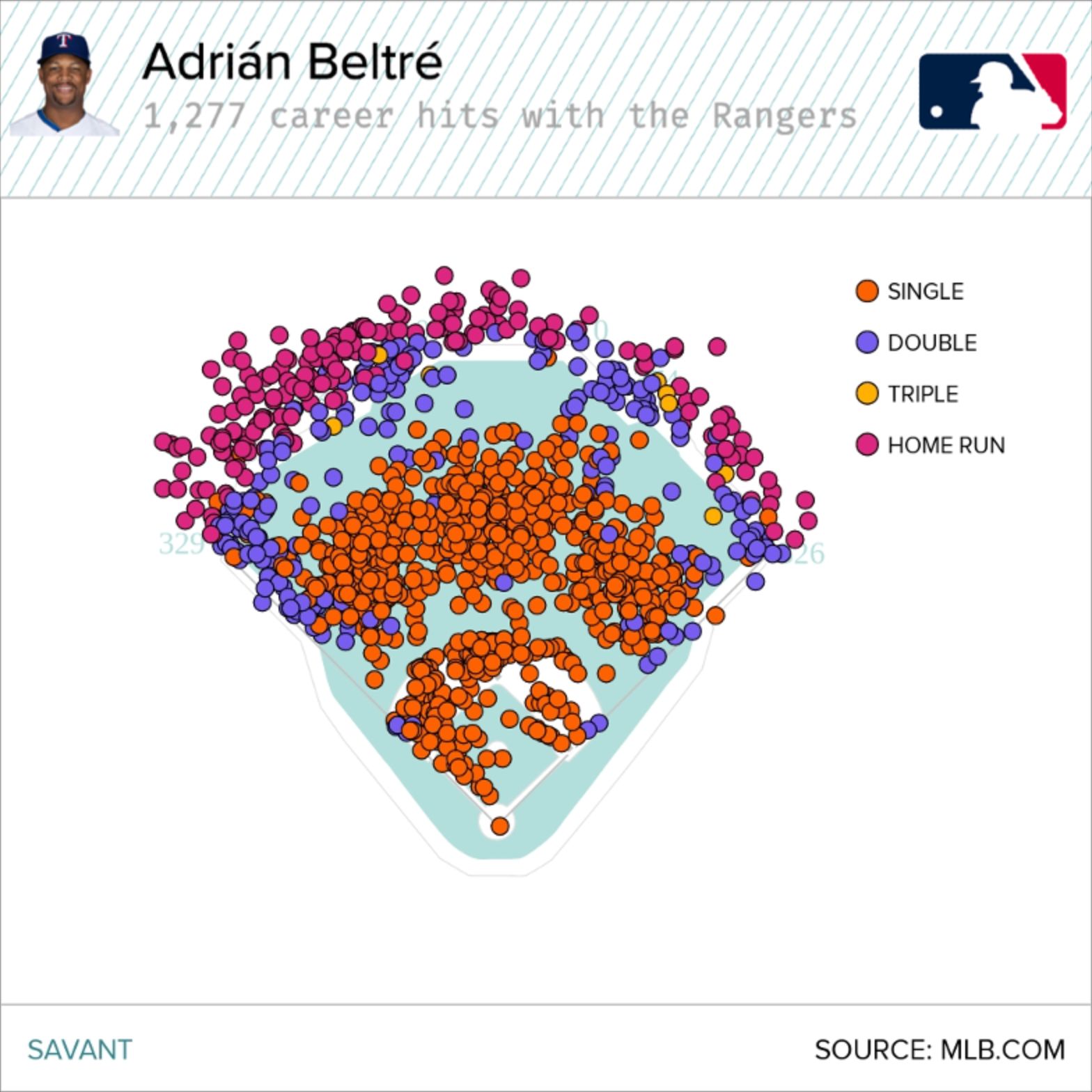
The 2016 season was the last of those great campaigns -- his final two seasons after that were more about wrapping up his career with a flourish, as Beltré joined the 3,000-hit club. But in 2016, even as a 37-year-old, Beltré remained an elite offensive and defensive third baseman.
You can see that in his percentile ranks: Beltré was both one of the most valuable batters and fielders in the Majors that season.
2) Todd Helton: Extra-base hit machine
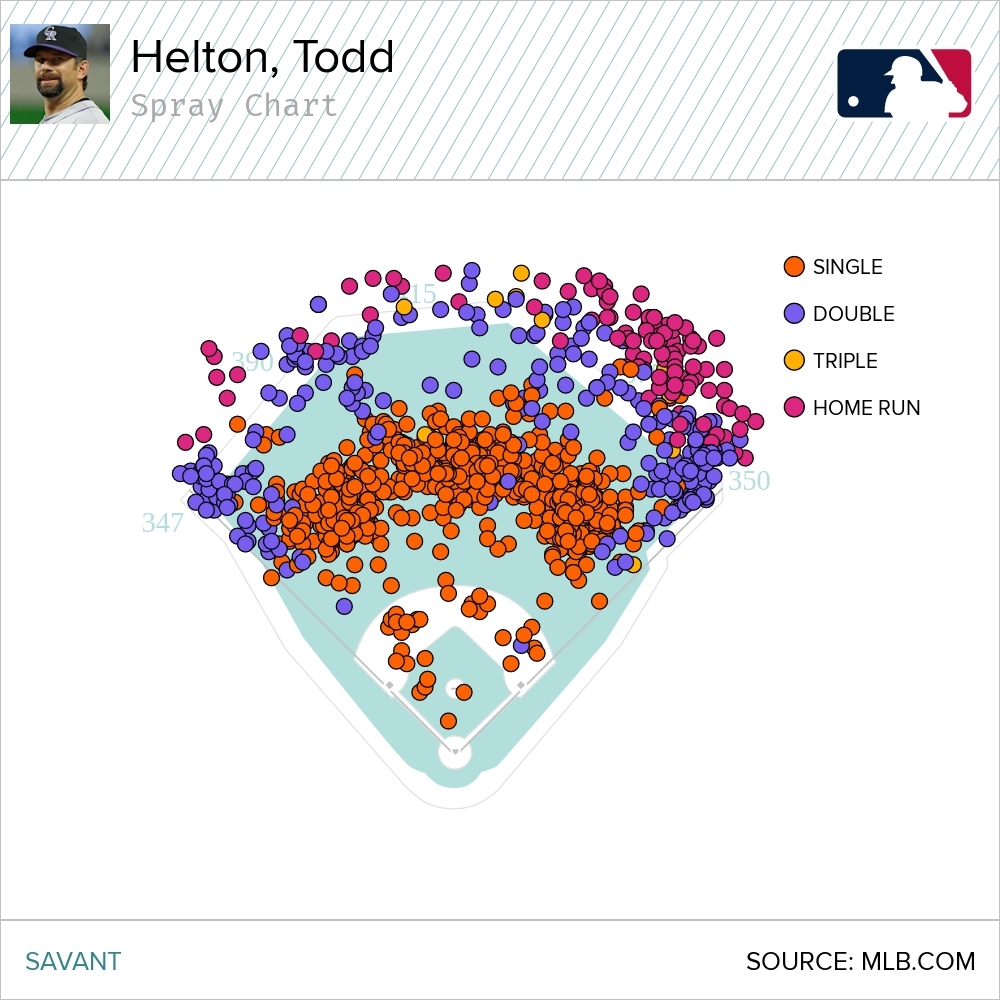
Even though Helton's very best years with the Rockies came before we could track the location of all his hits -- of which there were many -- even the spray chart of the second half of his career is a thing of beauty.
You can see in deep right field the hallmarks of one of the most feared lefty sluggers in baseball. Helton deposited so many baseballs over the right-field wall, both at Coors Field and away from it, and even more doubles into the corner or the gap.
Helton produced 998 extra-base hits in his career for Colorado, including 369 home runs and 592 doubles, and he was still punishing pitchers for extra bases late into his 30s. One of his greatest moments came in the back half of his career: When he led the 2007 "Rocktober" Rockies to the National League pennant.
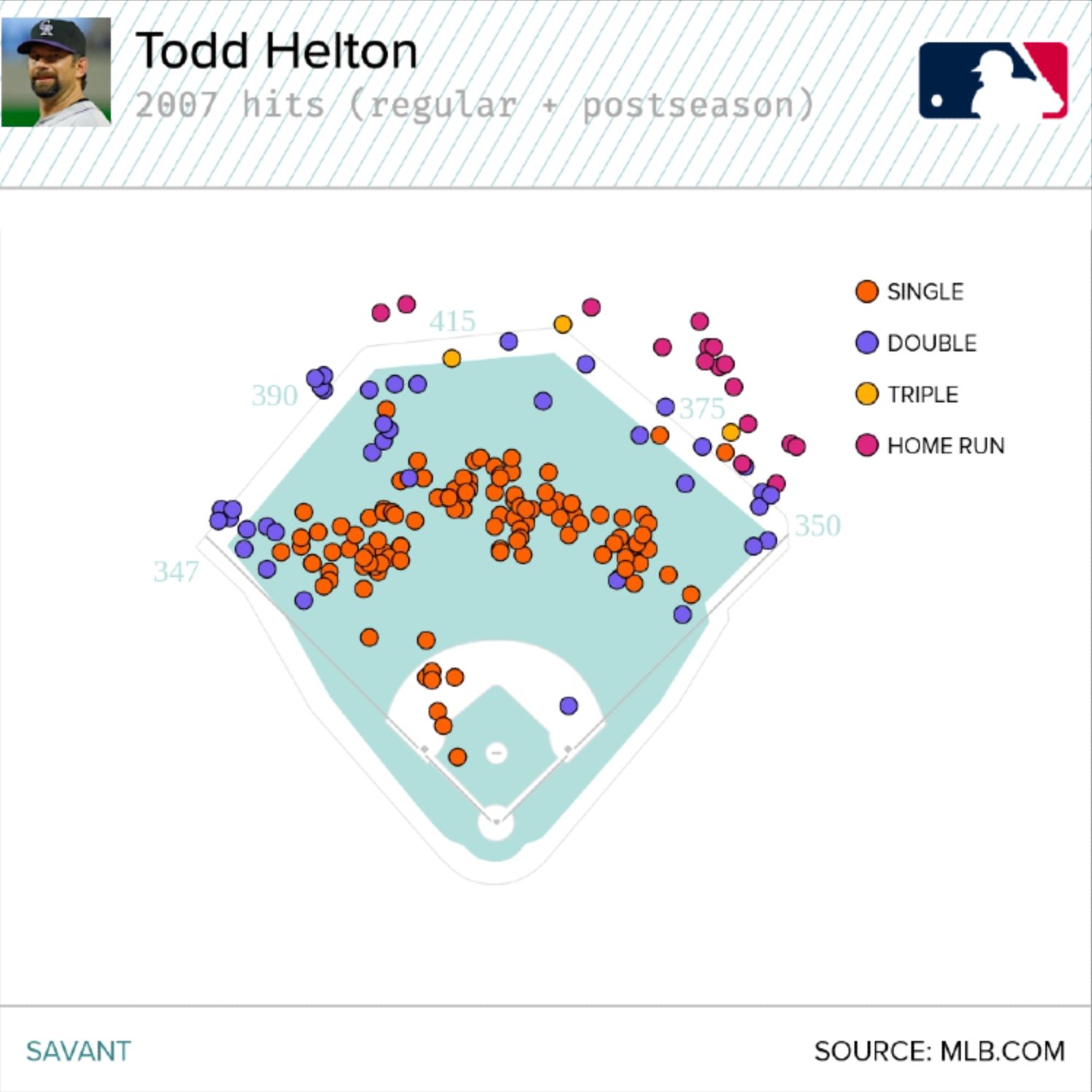
The 33-year-old Helton batted .320 in that '07 regular season, with 64 extra-base hits between the regular season and postseason.
3) Joe Mauer: Opposite-field king
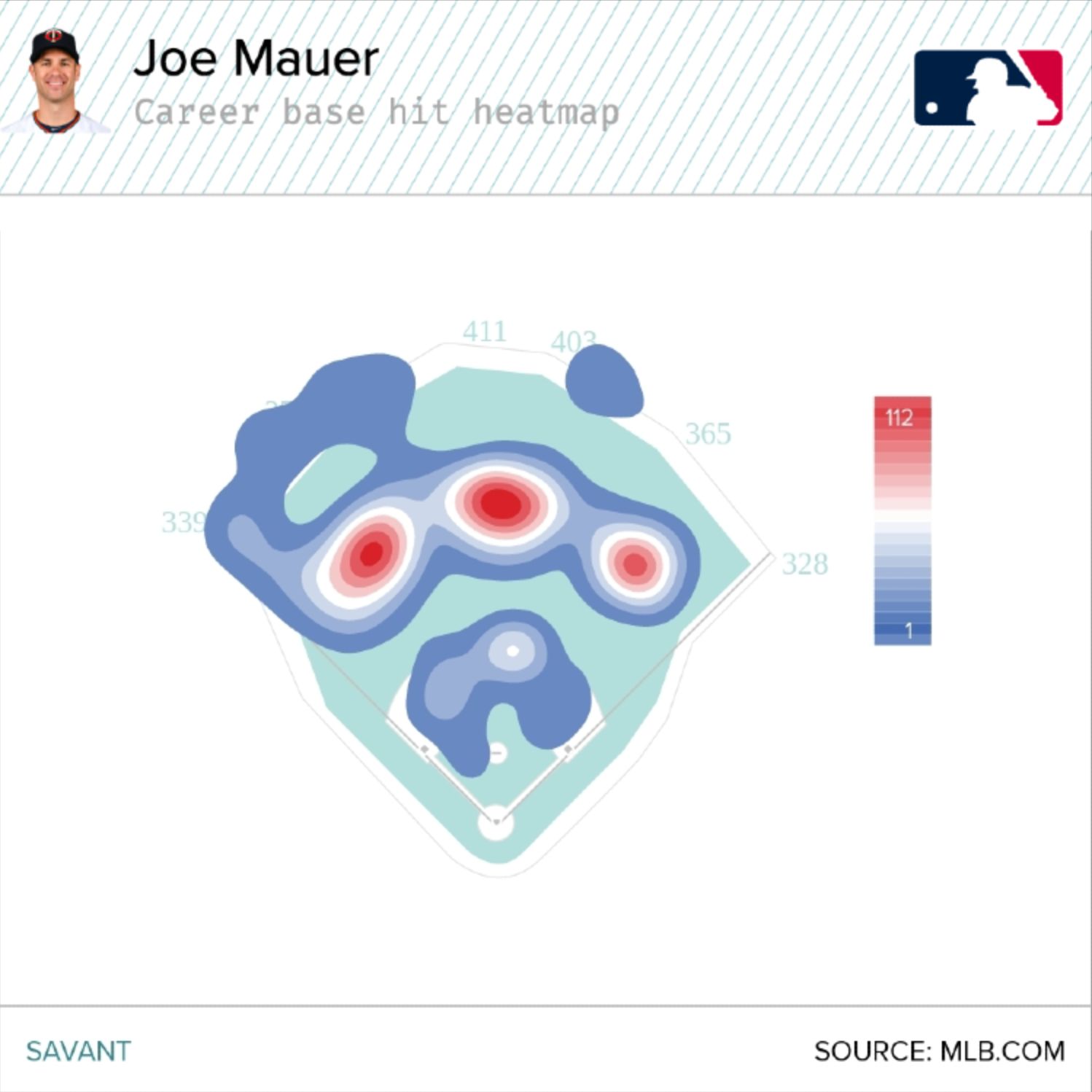
Mauer was as great a pure hitter as they come. And his calling card was his opposite-field hitting.
The Twins catcher was probably the best opposite-field hitter of his generation. We have hit location tracking for nearly his entire career, too, so you can see in the heatmap of all his base hits for Minnesota just how heavily Mauer peppered left field with his smooth lefty swing.
Look at the spray chart of his opposite-field hits alone.
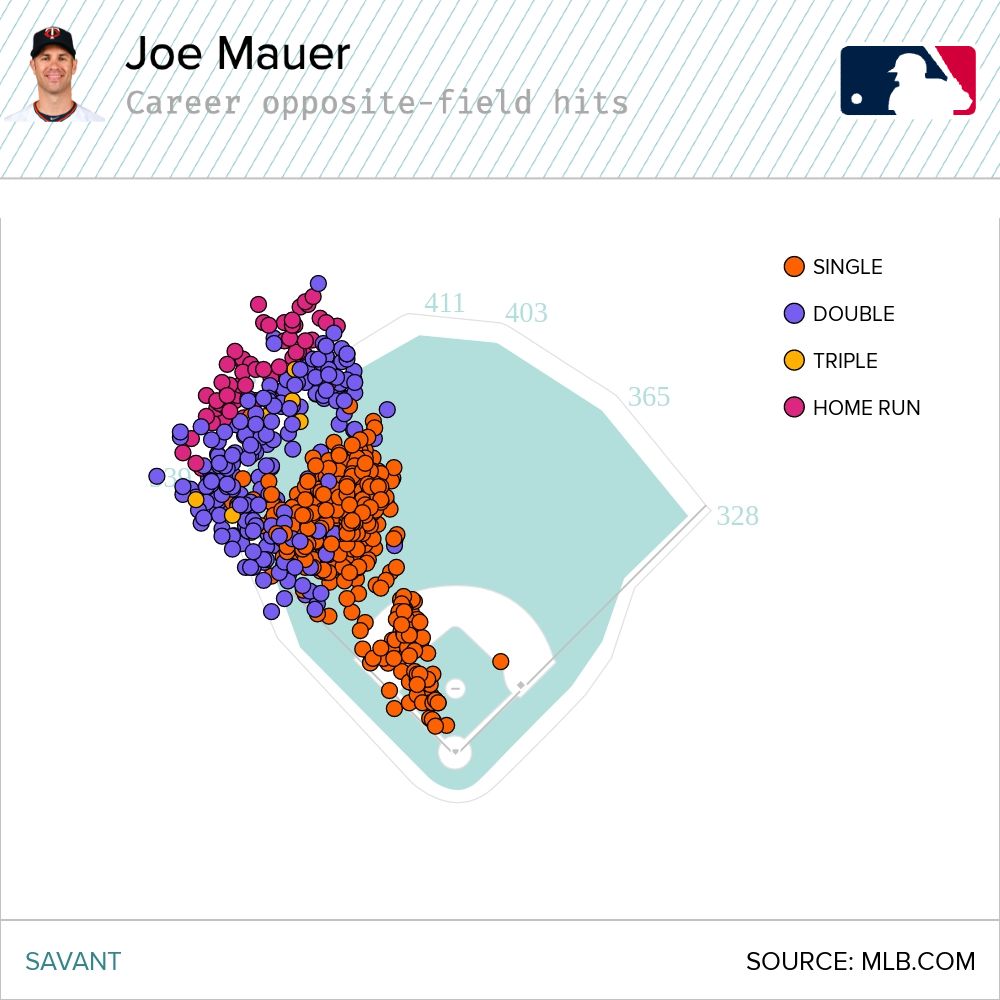
We have 842 opposite-field hits tracked for Mauer in his career, with that tracking going back to the 2005 season. He still has the most oppo hits of any Major League player over that entire timespan, 2005 until now.
Most tracked opposite-field hits, since 2005
- Joe Mauer: 842
- Miguel Cabrera: 795
- Nick Markakis: 733
- Robinson Canó: 715
- DJ LeMahieu: 679
- Ichiro Suzuki: 651
- Joey Votto: 620
- Eric Hosmer: 615
- Freddie Freeman: 580
- Derek Jeter: 559
It's the perfect list for Mauer to be atop. He won three batting titles by stroking line drive after line drive to the left side of the field. Nothing encapsulates why he was a Hall of Fame-caliber hitter better than that.
